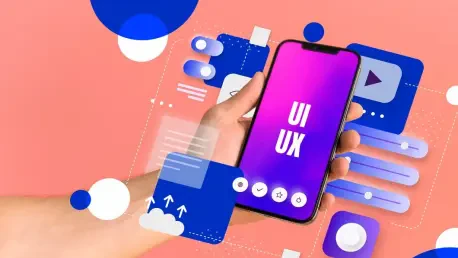In a digital-first business industry where milliseconds determine customer conversion and loyalty, organizations need effective interface development to attract new leads. As enterprises navigate 2025, the expectations placed on user experiences (UX) are growing. To remain successful, B2B websites need to deliver visual sophistication, personalized functionality, ethical practices, and accessibility. Read on to explore web design trends and gain practical insights into how business leaders can adapt and compete in this dynamic digital environment.
Small Details, Big Outcomes: Develop for Impact
Using micro-interactions is one of the most influential trends leading the user-centric design movement. These interactions refer to subtle software features that enhance usability without overwhelming users. It involves organizations investing in small functionalities that make websites more user-friendly. Features that web developers can incorporate include button animations, live form validations, hover effects, and instant visual feedback on user actions.
Although they may seem unimportant, micro-interactions contribute significantly to a user’s belief about a brand’s professionalism and reliability. When done well, simplistic design leads to improvements in lead generation, user retention, and overall satisfaction for businesses.
UX experts reveal that 88% of online consumers are unlikely to return to a website after a poor experience, making simple interfaces invaluable. The message for enterprises trying to attract high-value B2B clients is to design web pages for impact because every click and scroll matters.
Meet Customer Expectations With Personalized Designs
In 2025, the standard is for websites to offer the same level of tailored interaction found in prominent consumer platforms like Netflix or Amazon. This demand pushes businesses to implement custom web domains that adjust in real time based on user behavior, preferences, location, industry, and account history.
By prioritizing dynamic content delivery, companies can fast-track their connection with customers. At the same time, using AI-driven product suggestions and personalized dashboards facilitates that connection, improving buyer engagement on websites. When personalization is at play, web users start to feel seen and understood based on tailored experiences, which are key ingredients for building lasting B2B relationships.
Personalizing digital experiences goes beyond building networks with buyers. Instead, companies get an opportunity to increase sales by up to 10%. Investing in personalization tools allows stakeholders to maintain relevance by speaking directly to market demands, reducing friction, and improving the buyer journey.
Approach User Accessibility as a Business Strategy
Even a second delay in page loading can cause a 7% loss in conversions, making ease of use and accessibility major contributors to operational success. Visitors should be able to engage meaningfully with your website, regardless of physical or geographic abilities. Creating this level of accessibility builds trust, which can promote higher interest in the product and boost your conversion rate.
Web developers who build for accessibility typically integrate features like:
Keyboard-only navigation.
High-contrast visual modes.
Screen reader compatibility.
Captions and alt text for multimedia.
Companies should embrace accessibility as both a legal requirement and a core component of their ethical digital strategy. This perspective is useful, especially as legislation like the European Accessibility Act comes into effect. Viewing ease of use as an ethical responsibility helps enterprises broaden market reach while promoting inclusive digital offerings for clients across the EU.
Beyond the legal and ethical components, making designs inclusive reflects your company’s values, which is attractive to customers. An organization’s commitment to social responsibility influences the purchase behaviors of a majority of B2B buyers. Since accessibility signals inclusivity, it also positively shapes buyer perspectives on a business, which is key in any sales funnel.
Make Sustainable Web Development Your Priority
Buyers have become more climate-conscious over the years, making sustainability a pillar for businesses. Today, interface design is being evaluated through the lens of sustainable practices, so an eco-conscious organization is likely to develop brand awareness and boost buyer engagement.
Inversely, heavy websites slow performance and consume unnecessary server resources, contributing to higher carbon emissions. Businesses that come across as less concerned about the environment can risk losing investors and customer support. Fortunately, B2B organizations can embrace eco-efficient practices to reduce digital waste, including:
Compressed images and videos.
Modular code.
Lazy loading and caching.
Green hosting providers.
Prioritizing sustainable practices sends a strong message to clients and partners that your company is thinking long-term and aligning operations with environmental, social, and governance goals. This forward-thinking approach enhances reputational standing and sets your business apart from competitors in increasingly value-driven markets.
Recommendations for B2B Leaders
Invest in Scalable Systems
Modern websites must be agile, allowing teams to innovate quickly and maintain consistency across platforms. This agility is essential for enterprises managing complex digital ecosystems. It provides reusable components and code libraries, which improve UX and brand identity. A scalable design allows teams to build and test new features seamlessly, helping them save time and resources while enabling rapid response to market changes and user needs.
Upskill Teams for the Future of Design
Upskilling combines technical skills with cross-functional collaboration that enables you to increase response times and evolve your technology to meet user expectations. The future belongs to organizations that can adapt quickly, which makes upskilling your teams crucial. It is important for organizations to ensure that design and innovation staff are well-trained in modern principles, including accessibility, personalization, and ethical development. Prioritizing ongoing training across development and marketing departments helps your business stay competitive.
Align Business KPIs With Development Planning and Design
Web innovation is not just visual; it should be treated as a strategic asset with measurable impact. Your software should be measured like any other revenue-generating asset. To improve ROI, developers should tie their efforts directly to key business metrics such as conversion rates and client retention.
Having clearly defined KPIs allows organizations to make data-informed improvements and justify investments, ensuring that every decision supports broader business goals. This approach to web development fosters interdepartmental alignment and positions design as a critical driver of growth and performance.
Conclusion: Designing for Growth and Good
Prioritizing innovation is an opportunity for leaders to attract customer attention, earn trust, drive engagement, and deliver long-term value. By embracing trends like micro-interactions, hyper-personalization, accessibility, and sustainability, businesses can create modern and meaningful digital experiences.
Web design in 2025 is about more than aesthetics. It is a powerful tool for performance, inclusion, connection, and authentic brand expression. Looking ahead, enterprises should prioritize investments in scalable development tools and training to maintain agility amid evolving digital markets. An innovative and integrity-led approach to development continues to be one of the most powerful tools in the B2B toolkit. It builds a stronger, more inclusive digital presence that drives sustainable growth.









